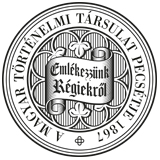Századok – 2005
TANULMÁNYOK - Belényi Gyula: A munkások állami ellenőrzése és a munkásellenállás (1949-1956) 43
A MUNKÁSOK ÁLLAMI ELLENŐRZÉSE ... (1949-1956) 81 őket.14 5 Ez a nehéz, nyomasztó helyzet az elítélt munkások (és természetesen minden más foglalkozású ember) családtagjait is jellemezte.146 Tekinthetők-e munkásfelkelésnek az 1956. őszi események Véleményünk szerint annak is tekinthetők, mert az ipari és más „városi" munkás rétegek mindvégig kiemelkedő szerepet játszottak benne. Nem volt azonban kizárólagosan munkásmegmozdulás, mert a forradalomban a magyar társadalom szinte minden rétege aktív szerepet vállalt, nem csak a munkások. Ilyen értelemben inkább egyfajta nemzeti felkelés volt az ország külső függésével és a diktatórikus belső viszonyaival szemben. A munkások politikai törekvéseinek legfőbb céljai egyébként nem is voltak specifikusan „proletár" célkitűzések, hanem túlmutattak azon: az ország legáltalánosabb problémáit kívánták megoldani. STATE CONTROL OF THE WORKERS AND WORKERS' RESISTANCE (1949-1956) by Gyula Belényi (Summary) The study, which aims to analyse the state control of the industrial workers, departs from the basic assumption that the socialist regime involved a profound transformation of the relationship between employers and employees. Contrary to the systems based on private property, most enterprises were owned by the state, a fact which made it possible to use government and administrative, that is, non-economic methods in regulating the working relations. The first part of the study reveals the process of restricting the free movement of workers on the market of manpower. It analyses in details the introduction of criminal law as a means of regulating the transfer of workforce by declaring one's leaving his/her job without previous consent by the employer („arbitrary leave") as a criminal act. This kind of regulation aimed to reproduce the conditions of the pre-market economies, basically without success. Although tens of thousands of workers were cited before the law between 1951 and 1953, the measure failed to yield the desired effect; it was hardly applied Elfter 1953 and was suppressed altogether in the 1960s. The state control of the industrial workers and the regulation of work through administrative measures was strongest at the workplace. From the end of the 1940s the „personnel" departments were established, which only partially engaged in providing the human resources of production; their main task consisted in screening the employees according to political requirements. These helf-confidential departments collected personal data which were grouped in secretely handled personal files. This method, offending basic human rights, was highly unpopular among the workers. That it was so is proved by the fact that during the revolution in 1956 one of the main demands of the workers' councils was the suppression of such files. Yet after the revolution the departments were reorganised. The study also proves that the workers were given no institutionalized protection in the face of the ever growing pressure of the state, for the trade unions were likewise under state control. Contrary to their venerable traditions, these organisations represented the interests of the employers against those of the empolyees. One of their main tasks, for instance, was the organisation and direction of working competitions within the factories. Consequently, the workers' councils of 1956 emphatically demanded their reorganisation and transformation into real organs of self-protection. A change came in the 1960s, when, although within the limits set by the state, the trade unions assumed again some of their traditional functions. The most radical form of the state control of workers was the activity of the political police (before 1956: Department of the Defence of the State, in Hungarian ÁVH) within the factories. The study attem pts for the first, time to present, f.his ki nd of activity on the basis of the archives of the or-143 ÁBTL, M-16.386. „Debreczeni János" ügynök. Jelentés. 1958. november 5. 146 Körösi Zsuzsanna - Molnár Adrienne: „Kemény tanulság volt". Az 1956-os forradalom utáni megtorlás következményei munkáscsaládokban. In: Munkástörténet - munkásantropológia. Tanulmányok. Szerk. Horváth Péter - Pethő László - Tóth Eszter Zsófia. Budapest, Napvilág, 2002. 104-114.
